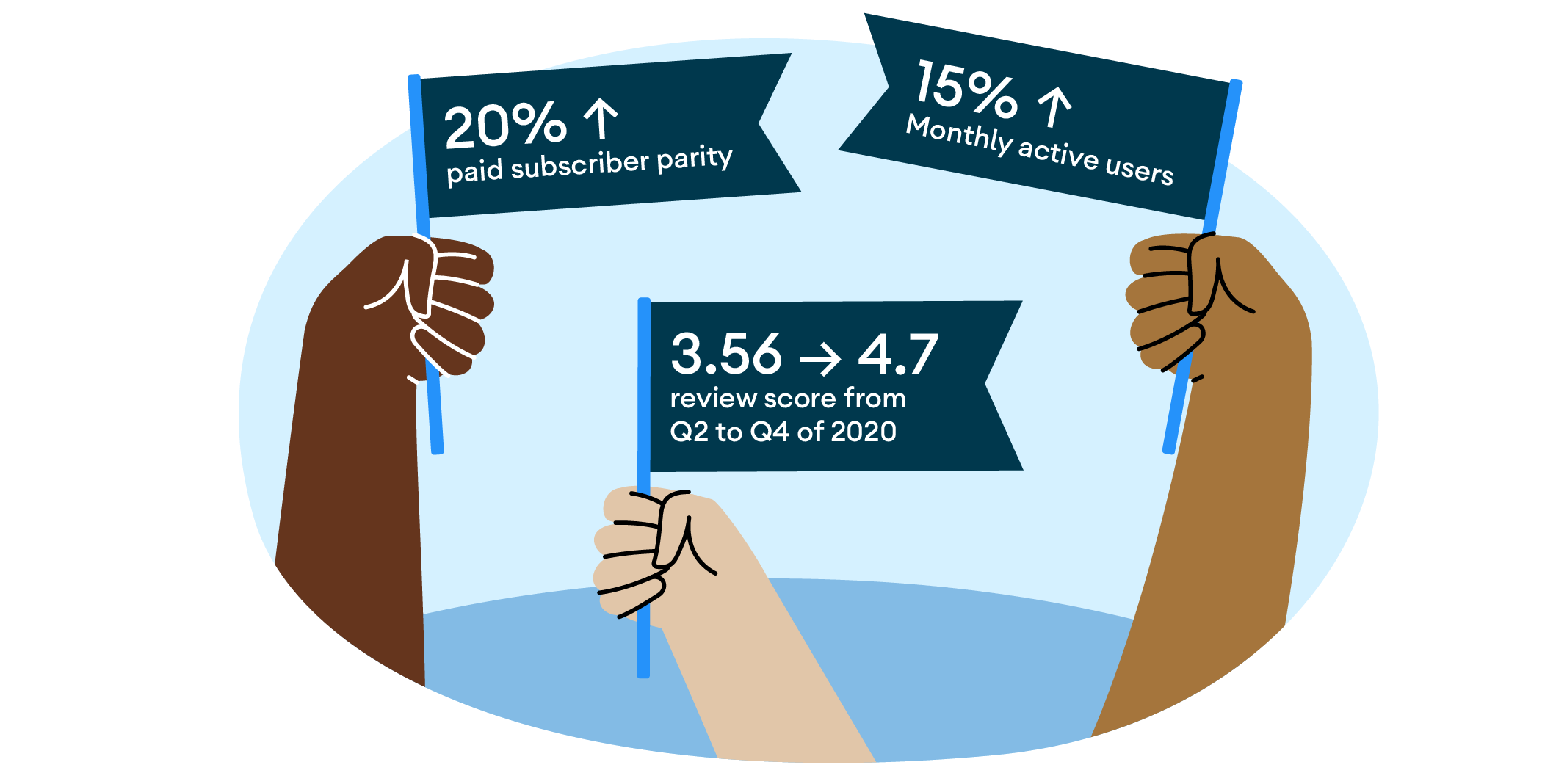正念冥想並非發生在真空中,它可以有效連結他人生活中其他人的點點滴滴。Headspace 是全球首屈一指的冥想應用程式之一,如今現在身為正念冥想領域的領導者,近來也持續演進了正向發展的願景。在 2019 年,他們決定將應用程式的規模擴展到冥想之外,並新增健身與健康功能。Headspace 發現,他們需要一個跨部門的工程師和設計人員團隊,才能實現全新產品願景,並為使用者打造卓越的應用程式體驗。為公司帶來令人興奮的新階段:設計團隊一開始就打造出全新體驗的原型,並採用煥然一新的設計。
想阻止 Headspace 擴充應用程式,並進一步拓展使用者的範圍,唯一是他們現有的軟體架構。其結構不夠清楚,無法支援所有新功能。事實上,Headspace 的開發團隊預測,若以目前的程式碼為基礎進行建構,需要花費更長的時間才能完成重寫。他們決定凍結開發目前的 Android 應用程式,並且全心投入全面翻新。
如何做到這點
Headspace 的 Android 開發團隊需要以便利的方式,將建構功能標準化。他們沉浸在 Google 在有關 Android 開發和應用程式架構的最新最佳做法中,但他們發現瞭解決方案。Google 建議使用模型檢視畫面模型重構應用程式。MVVM 是廣泛支援的軟體模式,逐漸成為業界標準,因為開發人員可將開發領域清楚區分開來,有助於簡化應用程式架構。選用 MVVM 後,Headspace 便是採用一組新的標準和最佳做法,加快開發速度。
而團隊所開發的另一項 Google 重要資源是 Android Jetpack 程式庫,包括用於插入依附元件的 Dagger 和 Hilt。這個新做法讓樣板程式碼變小且更有效率,提升團隊的工作效率。同時也趁著機會將應用程式完全遷移至 Kotlin 程式設計語言。該團隊使用 Kotlin 後,應用程式的測試涵蓋率從大約 15% 增加到 80%。測試涵蓋範圍越大,部署速度就越快,程式碼的品質也更高,當機次數也更少。
為確保在商店資訊評論中能呈現這項提升的使用者體驗,Headspace 導入了 Google Play In-App Review API。這個新 API 可鼓勵所有使用者在應用程式中分享 Headspace 體驗的評論。這項做法能夠提升評論評分,而且商店資訊評論必須能在 Google Play 上曝光,也有助於吸引使用者註意應用程式最近的改善項目。如要深入瞭解 Headspace 的重新啟動作業,請查看技術個案研究並分享給開發團隊。
成果
該團隊在八個月內完成重寫作業,順利將設計原型的所有功能提供給開發人員。他們達成初始目標,那就是在健身和健康空間觸及新目標對象,同時兼顧使用者品質。隨著評論和訂閱數的大增,開發人員得以提供更優質的使用者體驗,並吸引更多使用者。
Headspace 新推出的著重於 Android 應用程式卓越性,所有指標都獲得可評估的改善空間。

這項改進後,應用程式發布位置的作業系統之間,付費訂閱者的對等程度提高了 20%。在 2020 年第 2 季至第 4 季,新的評論發布方式讓商店資訊評論的表現從 3.56 提升至 4.7。隨著評論的顯示,加上新功能及改善使用者體驗後,全球每月活躍使用人數增加了 15%。就內部而言,新架構讓 Headspace 能夠快速建立更安心的工作流程,以利未來開發。如此一來,他們就能減少花在測試及修正錯誤的時間,而有更多時間導入新功能,例如近期改善的留存率流程,以及向上銷售程序的最佳化作業。這項重新編寫功能也進一步促進深層連結和行銷工具整合。有了這項優勢,Headspace 的團隊就能從更多使用者收集更實用的資料、直接回覆提供意見的使用者,並運用這些意見回饋推動未來的開發工作。
Headspace 為此投入了大量資源,也投入了大量的 Android 應用程式卓越計畫,同時開啟令人耳目一新的健身和運動領域。Headspace 奠定穩固的開發基礎,以及使用者的最新意見回饋,順利達成使命:增進所有人的健康與幸福感。
開始使用
如要瞭解如何重新編寫應用程式,提供更優質的使用者體驗,請參閱 Headspace 技術個案研究。您也可以前往應用程式卓越性到達網頁,深入瞭解如何提供一致直覺的應用程式使用者體驗,拓展業務。

